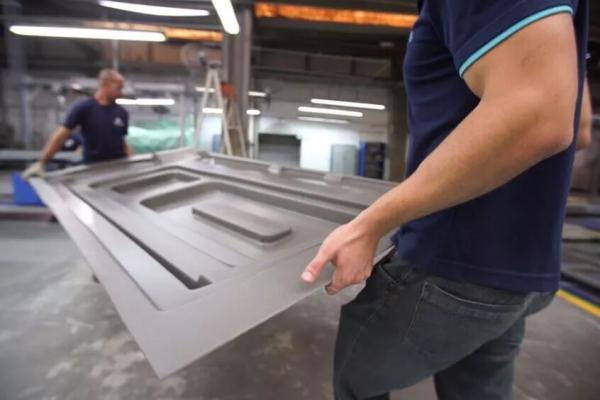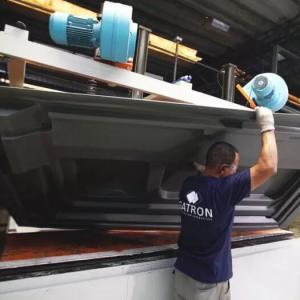Thermoforming is the process of heating a flat thermoplastic plate to soften over the mold and, after cooling, assume its shape. This is the default answer. But thermoforming can be much more than that, as our experience here at Gatron shows.
We have used this technology since the early 1990s when we produced bus interiors for Marcopolo. Since then, without false modesty, we have become experts on the subject. So much so that we design and build several of our thirteen machines and develop complex, large-scale parts that are quickly implemented.
For example, we produce hoods for some models of Massey Ferguson tractors by thermoforming ABS sheets. The exciting thing about this application, initially designed in steel, is that we developed plastic parts resistant to heat and vibration from the engine. Not to mention the initial investment is much lower than necessary to produce steel.
We were also able to reduce costs with the thermoforming of components – bumpers, roofs, and front parts, among others – for Jacto sprayers.
More recently, we took a fascinating solution developed by Port Roll, a company from Guarulhos (SP) that specializes in reusable packaging for products presented in coils or rolls.
With thicknesses of up to 14 mm, which is unusual for thermoforming, we manufacture parts that can transport coils of up to 1,000 mm in diameter after being attached to metal bars. In addition to being recyclable, the components we produce for Port Roll stand out for their high mechanical resistance, a fundamental characteristic of road transport.
Cost-benefit
So, when the customer comes to us to talk about thermoforming, we combine all this technical experience and ability to design parts in-house with the versatility of our manufacturing facilities.
Our lines come in various sizes, with the largest allowing the production of thermoformed products over two meters wide – ideal for harvester roofs, for example. Result: the variety of options translates into an improved cost-benefit ratio.
Ideal for low and medium runs, thermoforming still has much room to grow in Brazil, especially in the nationalization of parts consumed by the agroindustry and wind energy generation. With one detail: the investment in tooling is much lower than necessary in processes such as injection or SMC.
Now that we've talked about thermoforming, how about we talk about your next project? 😉


